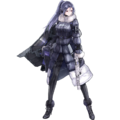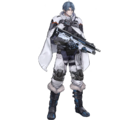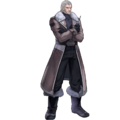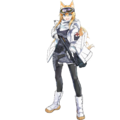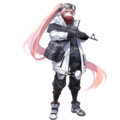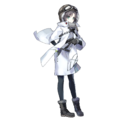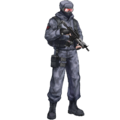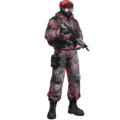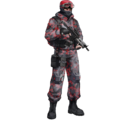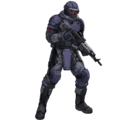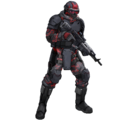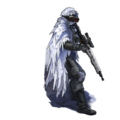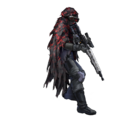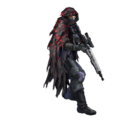Reverse Collapse: Code Name Bakery: Difference between revisions
No edit summary |
No edit summary |
||
| Line 168: | Line 168: | ||
File:RC Promo CG2.png | File:RC Promo CG2.png | ||
File:RC Promo Suger.jpg|New enemy character: Suger. | File:RC Promo Suger.jpg|New enemy character: Suger. | ||
File:Bakery Girl Login Wallpaper.png|[[Girls' Frontline]] login wallpaper during April Fools 2023. | File:Bakery Girl Login Wallpaper.png|[[Girls' Frontline]] login wallpaper during [[April Fools]] 2023. | ||
File:Bakery remake teaser.png|Teaser concepts shown during [[Girls' Frontline]] 2nd Anniversary livestream in 2018. | File:Bakery remake teaser.png|Teaser concepts shown during [[Girls' Frontline]] 2nd Anniversary livestream in 2018. | ||
</gallery> | </gallery> | ||
Revision as of 16:25, 20 December 2023
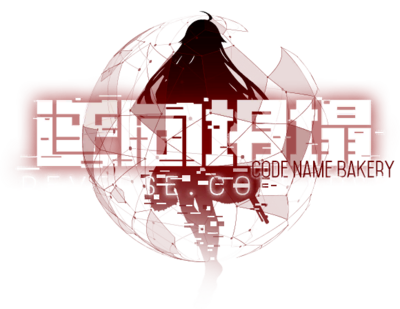
Reverse Collapse: Code Name Bakery (逆向坍塌:面包房行动) is an upcoming strategy RPG game for PC, mobile and Nintendo Switch, developed by MICA Team as a remake of 2013's Codename: Bakery Girl. Originally announced for 2022, it has been pushed back to 2023. It will be published by X.D. Network Inc. and localized in English, Japanese, Korean, and traditional and simplified Chinese. One of its taglines is “30 years after Girls' Frontline, Code Name Bakery begins.”
The game features updated graphics and character designs and takes place during the First Antarctic War of 2092, following MID agent Mendo and the mysterious girl Jefuty in their fight against the Union of Rossartrism Nations Coalition armies. The story's script is in excess of 300,000 words[1] and is told through branching timelines due to Jefuty's “ability to recall and challenge her fate”. Some fights will receive unique animations.[2]
Gameplay
The game supports controllers and mouse-and-keyboard controls and includes a color blind mode. There are three difficulty levels: Casual, with easier battles and no manual save limit (the game provides auto-save); Normal, with only one save per round; and Hard with tougher fights, one save per round and no EXP granted in Training Simulation.
Movement and combat
The game is played on a square grid. After selecting a unit, it can be moved by selecting the target tile, attack by selecting an enemy, or use a skill or equipment, as long as it has enough Action Points (AP) to perform the action. AP is recovered by ending the player's turn. The attack and visual range of an enemy can be previewed by clicking on it, as well as its next movement if it is patrolling. An icon will show if the enemy is on standby (immobile), attacking (moving towards player units), patrolling, defending (switch to attack when a player unit enters attack range) or searching (moving to the last known location of player units after they exit the enemy's visual range). Each attack has a percentage chance to hit and causes flat damage to the target. Some attacks, such as a trip mine explosion, can cause a unit to be thrown prone and lose a turn.
The range of movement of a unit depends on the terrain. Road tiles consume less AP to traverse than rocky or forest terrain. Some tiles, like forests, ruins or sandbags, can give buffs and debuffs to evasion or accuracy. There are also special tiles that restore health or can be targeted to trigger an explosion. Each unit also has a defined firing range depending on its equipped weapon. In attack mode, red tiles denote the most effective range, while the orange tiles at the limit of the range have a lower chance to hit. Each enemy unit defeated grants a Skill Point (SP) to every player unit (with a bonus to the unit that dealt the kill), which can be spent to use a skill. Skills may have a cooldown period after use.
Some tiles on maps are marked to indicate that an item can be picked up. However, there is a limit to the amount of equipment player units can carry. Items exceeding Backpack capacity are stored in the Temporary Backpack and transferred to the Depot at the end of the level. Some items can also be acquired from killing enemies marked with a specific icon.
When all Health Points (HP) of a player unit are depleted, they enter Critical Condition and can no longer take action until another unit use a Medkit on them.
Compounded unit stats (base stats + weapon stats) comprise HP, AP, SP, damage (ATK), accuracy (ACC), attack range (ST), evasion (EVA), critical hit rate (CHR), critical hit damage (CHD), base detection range (NVR) and detection range of stealthy enemies (ASVR).
Stealth
When a character enters stealth mode, they have the opportunity to move unnoticed by enemies. In visual range mode, green tiles are within visual range of an enemy but can be crossed in stealth mode without alerting it, but not yellow tiles. Tiles marked with a crossed eye can always be crossed safely as the enemy's visual range is blocked by terrain. Additionally, tiles vertically and horizontally directly adjacent to a unit, shown striped, are always within detection range. However, enemy units are also able to be concealed from the player's visual range.
Visual range depends on the terrain and mist tiles during extreme weather, which can change during the course of a level. Campfires will expand visual range during extreme weather.
Game phases
Each level begins with a preparation phase where the map layout can be reviewed, characters enhanced and equipment crafted and enhanced.
Each map has a victory objective, several bonus objectives and failure conditions. Bonus objectives count towards the level's final rank, from rank F (not completed) to S. Better ranks grant more EXP, crafting Parts and Research Points. Extra conditions can become unlocked as the player progresses in the level.
Equipment
Equipment includes healing items to restore Health Points, items creating stealth opportunities or debuffing enemies, and attack items such as grenades, mines and turrets. Turret-type items that have been deployed in the field are automatically returned to the Backpack at the end of the level.
Items are stored in the Backpack, which is shared between characters but has limited capacity. Each item type consumes one Backpack space, and there is a limited amount of each item type that can be carried. Backpack capacity increases as players progress in the game. During preparation phase, items can be moved between Backpacks and the Depot, which isn't accessible in combat.
Basic items can be produced by spending Parts during the preparation phase in the Item Production screen. Parts are acquired by completing levels or disassembling items. The stats and carrying capacity of each item type can be increased by spending Research Points in the Item Modification screen during preparation phase. Spending Research Points increases the player's Tech level, which unlocks more modifications.
More powerful items can be created using MID's material shuttle using Reverse Collapse, in the Item Synthesis screen, by spending basic items and rarer materials. While item production and modification can only be done during preparation phase, Item Synthesis can also be done during combat. Synthesized items cannot be disassembled.
- Damage
- Fragmentation Grenade (production)
- Trip Mine (synthesis)
- Incendiary grenade (synthesis)
- Function
- Smoke Grenade (production)
- Sound Bomb (synthesis)
- Flashbang (synthesis)
- Blaster (production)
- Holographic Gravel (production)
- Instruments
- Simple Weapon Station (synthesis)
- Scanner (synthesis)
- Barbed wire barricade (synthesis)
- Camouflage Standee (synthesis)
- Recovery
- Medicine (production)
- Medical Kit (synthesis)
- Painkiller (synthesis)
Character Training
Every character participating in a level is granted EXP at the end of the level. A character gains a level when it accumulates enough EXP, which increases its base stats and grants it Potential Keys. Characters can be leveled up to the team's level cap during preparation phase using Training Simulation (except in Hard Mode).
Passive and active skills for each character, respectively called Traits/Attributes and Skills, can be enhanced in the Genetic Upgrade menu at certain levels by spending Potential Keys. Each time Potential Keys are spent, the Nucleobase Completion rate of the unit's Ultimate Skill increases to unlock up to four upgrades.
While units come equipped with their base weapon, they can acquire alternative weapons with different stats, and each weapon can be Ascended with Modification Blueprints and Parts to raise its stats. Accessories can also be acquired to grant bonuses to a weapon. Weapons can be switched in the field but Accessories must be selected during battle preparation.
- Antaresia (Mendo, base weapon)
- Buffalo (Mendo)
- Mosin-Nagant (Jefuty, base weapon)
- OSK (Atena, base weapon)
- Killer Whale (Jevon, base weapon)
Collectibles
Some levels contain a Secret Document, which must be picked up from the indicated tile like a normal item. All levels also contain a Collection item, which must be picked up from an unmarked tile.
There are also alternative costumes to change the appearance of player units.
Characters
Playable characters
- Fox Squad
- “Bakery”
- Razor Squad
- 27th Rescue Team Subdivision, Squad G62
- Betty (IDW)
- Ruby (P2000)
- Abigail (M500)
- Valmet (M82)
-
Betty
-
Abigail
-
Valmet
-
Ruby
Enemies and NPCs
- Union of Rossartrism Nations Coalition
- Standard enemies
- Scout (AT-77U)
- Elite Scout
- Sniper (SVP-79)
- Elite Sniper (SVT-79)
- Commando (AT-77)
- Elite Commando (AT-77)
- Medic (MPN-6)
- Bosses
- Aille & Ivar
- Mach
- “Crane”
- Standard enemies
- Antarctic Union
- Colonel Kämpfe
- Refugees
- Dana, Anton and Lena
- Yuri
- Lige
- Ouska
-
URNC Scouts.
-
URNC Commandos.
-
URNC Snipers
-
URNC Medic.
Levels
- Chapter 1
- Act 1: Ambushed
- Act 2: First Battle
- Act 3: Through the Blizzard
- Act 4: Narrow Escape
- Act 5: Stranded in Snow
- Act 6: Breakout
- Act 7: Entrust -> Timeline Reset
- Chapter 2
- Act 1: Shortcut
- Act 2: Incident
- Act 3: Rendezvous
- Act 4: Night Raid Alarm
Development history
A remake of Codename: Bakery Girl was teased during the reveal livestream for Continuum Turbulence in January 2018.[3] In a March 2018 Weibo post, Yuzhong said he would like to include unreleased DLCs in the remake.[4] Two months later, the remake was teased again at the end of Girls' Frontline 2nd Anniversary livestream. The name “Reverse Collapse” was announced in The Art of Girls' Frontline Vol.2.[5] The social media accounts and game pages for Reverse Collapse were put online on 26 July 2019 and the first gameplay trailer was shown during Girl's Frontline 4th Anniversary livestream in 2020. It was announced that the content of three cut DLCs from the original game would be included.[6]
It was originally announced that the plot and character backgrounds would be tweaked from the original game to accommodate the new expanded universe.[7] The project ultimately grew beyond a simple remake and greatly expanded the story and overhauled the level design. A private beta took place in April 2023 to celebrate the 10 years of the original game, followed by a week long public demo during Steam Next Fest on 19 June,[8][9] where it was the 15th most played demo, repeated during the week-long Steam Strategy Fest of 29 August 2023.[1]
Gallery
-
Logos.
-
Game icon.
-
Main key art.
-
New enemy character: Suger.
-
Girls' Frontline login wallpaper during April Fools 2023.
-
Teaser concepts shown during Girls' Frontline 2nd Anniversary livestream in 2018.
Links
- Official Weibo account
- Steam page
- First Trailer
- Gameplay trailer
- Second Trailer
- Official English Twitter account
References
| Franchise |
|---|



